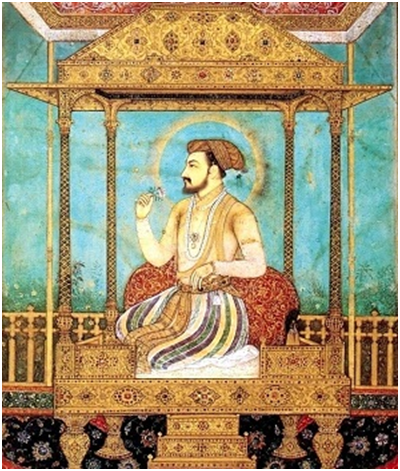 Munaza Kazmi
Munaza Kazmi
Welcome back my dearest readers, together we have travelled from the snow laden peaks of Feranga to the glistering Indian palaces, whose light still reflectsacross the alleys of Lahore, in the towers of Agra, and over the domes of Dehli.
Shah Jahan, aged 35 succeeded Emperor Jahangir, and with him the Mughal golden age reached its culmination. Shah Jahan was the quintessential Great Mughal, who by the splendor of his dress and ornament, and his lordly bearing and conduct, personified the opulence and grandeur of the empire. In him the Mughal rumbustiousness was at last tamed under the influence of Persian courtly formulism. However courteous and soft-spoken, his bearing in public was always stiffly dignified. “I never saw so settled a countenance, nor any man keep so constant a gravity, never smiling, or in face showing any respect or difference of men, but mingled with extreme pride and contempt of all”, observed Roe.
Shah Jahan, (Shahab-ud-din Muhammad Khurram) was born on 5thJanuary 1592, to Jahangir and his second wife, Jagat Gosaini. He was the favorite grandson of Emperor Akbar and from the time he was just 6 days old, he started growing up under the care of Akbar and his queenRuqaiya Sultan Begum.
Shah Jahan, unlike his ancestors, particularly unlike his father and grandfather, was a rigidly orthodox Muslim, and with him began the attempt to convert the Mughal Empire into a theocratic Muslim state, in a deliberate reversal of the Mughal policy. Although all his predecessors, except Akbar, had occasionally persecuted Hindu and demolished temples, they had done so in random and impulsive acts. Now it was state policy. Furthermore, while Akbar and Jahangir had allowed anyone to adopt any religion, Shah Jahan prohibited Muslims from changing their religion. He also directed that Hindus should dress differently from Muslims.
A major influence on the formulation of Shah Jahan’s policies was his queen, Mumtaz Mahal. She was a niece of Nur Jahan, and, like her aunt, she played a crucial role in government, but discreetly, from behind the throne. Mumtaz, wrote the Mughal chronicler AminaiQazvini, was the emperor’s intimate companion, colleague, close confidante in distress and comfort, joy and grief. Shah Jahan was totally devoted and faithful to her. And she was marvelously fecund, as she begot him 14 children in the 19 years they lived together, but tragically died at the age of 34 while delivering her last child. Shah Jahan was devasted by the tragedy, and it was to commemorate his love for her that he built the Taj Mahal, the most beautiful building of the entire world.
Shah Jahan had a keen interest in music and dance, for this he used to sing at the private gatherings of his intimate nobles, however his main artistic interest was in architecture, which found expression in a number of magnificent buildings he erected. He took enormous pride in them, as reflected in the couplet he got inscribed on the hall of public audience in his Delhi palace, Qila Mubarak.
If there be a paradise on earth,
It’s this, it’s this, it’s this!
Indeed, that was how the contemporary world saw the Mughal court. Shah Jahan was the richest and most exalted monarch in the world in his time, and he lived in the greatest possible magnificence. However, his last years were heartbreaking. Trouble erupted in the summer of 1657 when Shah Jahan fell seriously ill. This sent shivers of anxiety through his 4 sons stationed in the different provinces of the empire. It was the throne or death for each of them.
Soon the princes were on the march with their armies, headed for the imperial capital. Their steps found no turning back, even though Shah Jahan recovered, and named Dara Shokuh his favorite son as the crown prince. A prolonged and traumatic war of succession ensued, out of which the emperor’s 3rd son, Aurengzeb, the master planner emerged victorious, eliminating with his crafty manners all his brothers and usurping the throne. And he melancholy and remorseless, kept Shah Jahan confined in the Agra fort for 8 years, till the end of his life.
TO BE CONTINUED….



